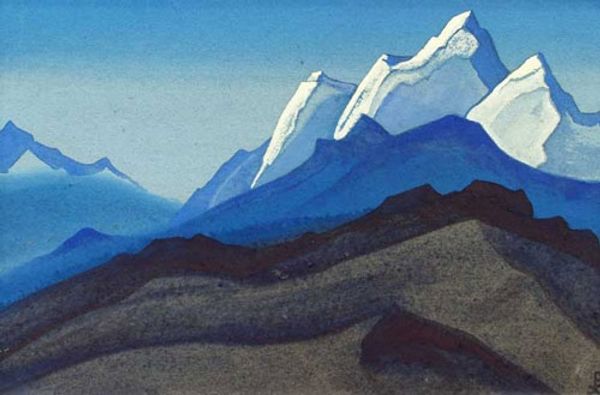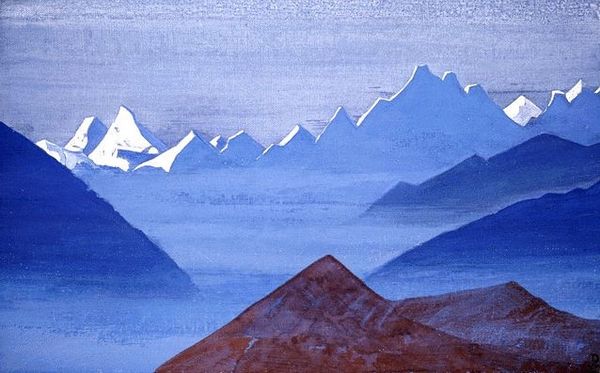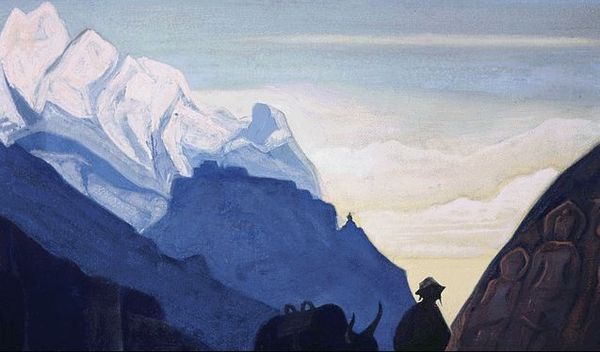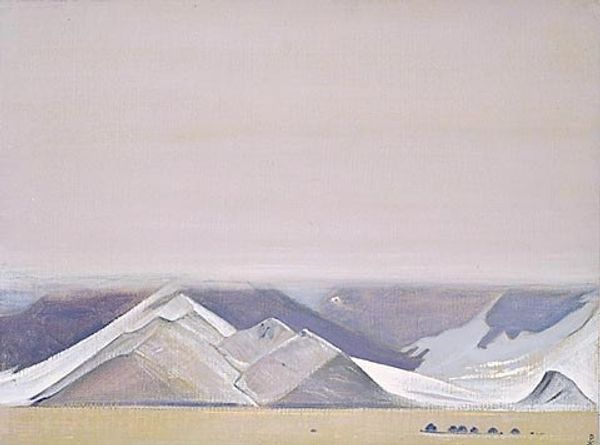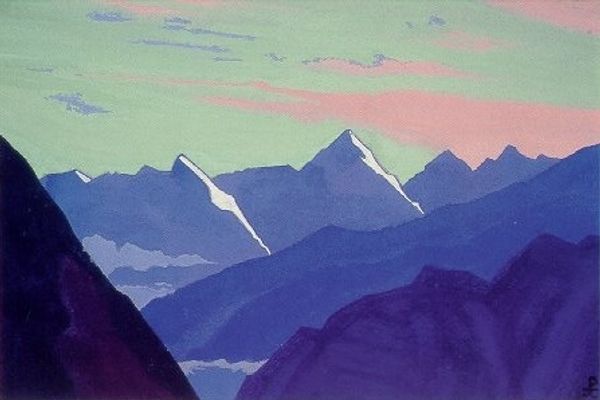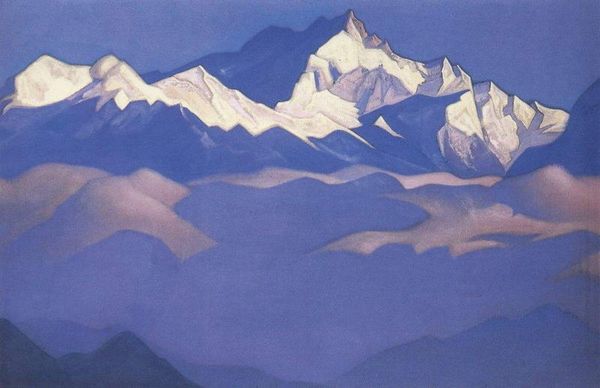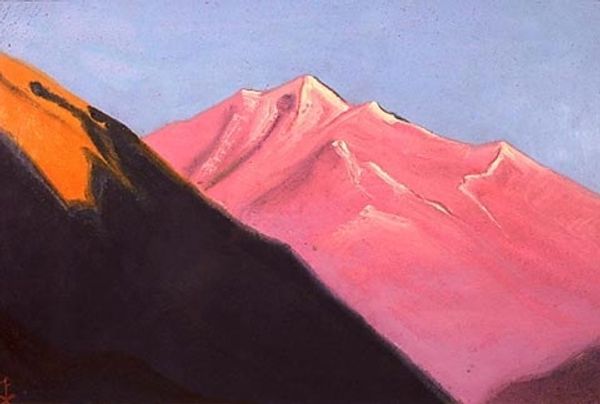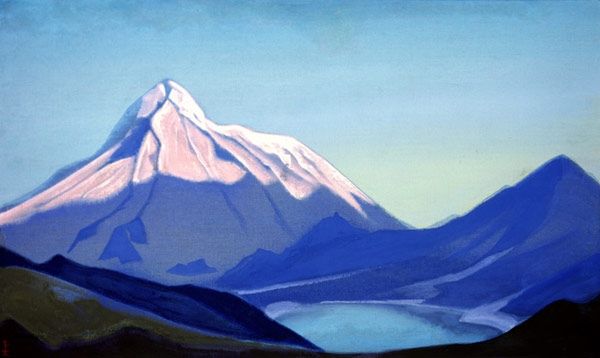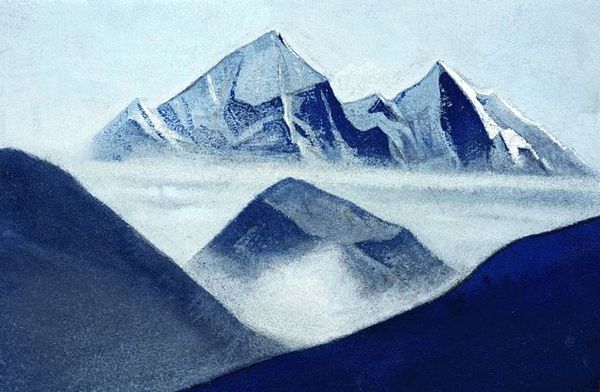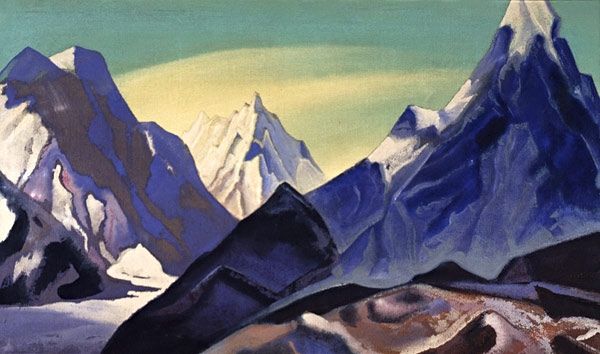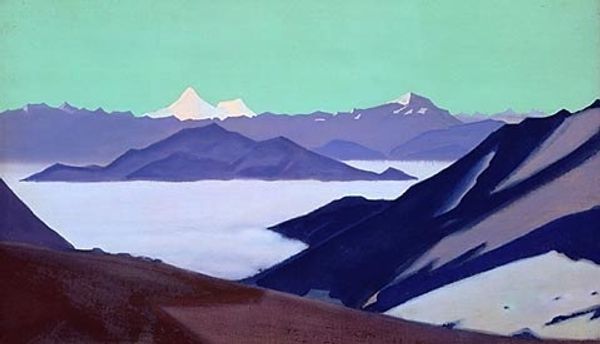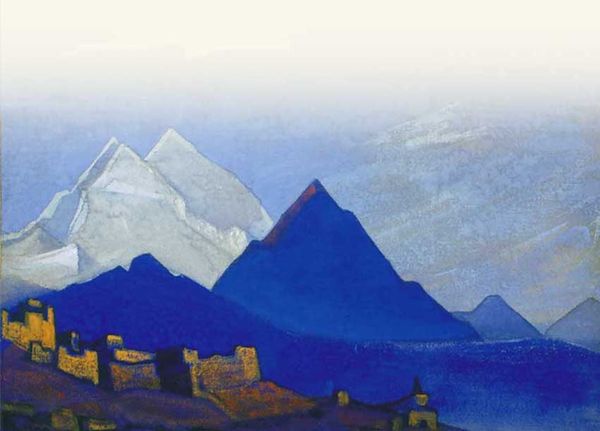
Copyright: Public domain
Editor: We're looking at "Rocks of Ladakh" from 1932, by Nicholas Roerich. It seems to be done in tempera and maybe oil paint. It feels... ancient. The layers of mountains receding into the distance create this imposing, almost mystical scene. What do you see in this piece, considering its strong symbolic style? Curator: Beyond the visual grandeur, consider the cultural memory etched directly onto the landscape. The petroglyphs on the foremost mountain are powerful, aren't they? Roerich wasn't simply painting mountains; he was layering time, imbuing the rocks with the echoes of past lives. Editor: Yes, it’s like the mountains themselves are telling a story, through the animals and human-like forms. Curator: Precisely! Think about the people who created those images. What did those animals symbolize to them? What rituals, what beliefs are captured there, on that plane, visible within our 21st century gallery? Roerich’s style makes these questions vibrate in one's mind! Editor: That's amazing... So, Roerich is drawing a direct connection between the physical landscape and the spiritual beliefs of the people who inhabited it. But why depict it like that? Curator: Perhaps to illustrate the enduring power of cultural memory. The mountains stand as silent witnesses, and the art is a living expression. Does that visual combination strike you a unique way? Editor: It's kind of sobering, seeing symbols that might represent hope or daily life juxtaposed with these massive, indifferent peaks. They were gone. Curator: And yet, they remain. In the stones. In Roerich’s work. Perhaps Roerich offers us more than just a landscape; but something which could allow us insight, or meaning from it. Editor: I’ll look at landscapes differently now. It's not just scenery; it’s history, belief... memory!
Comments
No comments
Be the first to comment and join the conversation on the ultimate creative platform.
